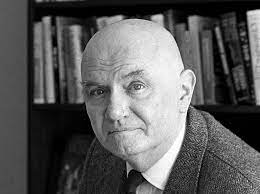Thomas Berger: Contribution as American Novelist
What is Thomas Berger known for?,Who was the first great American novelist?,What is Thomas Pynchon known for?,What did Thomas Berger do?,Is the book Little Big Man a true story?,Is there a sequel to the Little Big Man?,Thomas Berger, a prominent figure in American literature, has left an indelible mark through his insightful and thought-provoking novels. His career, spanning several decades, goes beyond mere storytelling, delving into the complexities of human existence and challenging societal norms. This essay aims to explore Berger’s significance as an American novelist, examining his thematic explorations, narrative techniques, and lasting impact on the literary landscape.Thomas Berger: Contribution as American Novelist
Early Life and Career:
Born on July 20, 1924, in Cincinnati, Ohio, Thomas Berger grew up in a middle-class Jewish family. After serving in the United States Army during World War II, Berger pursued education, earning degrees in English from the University of Cincinnati and Columbia University. His literary journey began with the publication of “Crazy in Berlin” in 1958, followed by several novels. However, it was “Little Big Man” in 1964 that catapulted him to literary acclaim, exploring the American West through a satirical lens.Thomas Berger: Contribution as American Novelist
Thematic Explorations:
Berger’s works are rich in thematic depth, offering profound insights into various aspects of the human condition. His recurrent themes include:
1. Deconstruction of American Mythos: Berger challenges romanticized notions of the American frontier, particularly in “Little Big Man,” where he revises Western narratives to explore issues of race, identity, and cultural conflict.Thomas Berger: Contribution as American Novelist
2. Satire and Social Critique: Known for his satirical wit, Berger critiques societal conventions and institutions, as seen in “Neighbors” and “Sneaky People,” where he exposes the absurdities of suburban life and middle-class morality.Thomas Berger: Contribution as American Nov
Also Read-
- John Gardner: Contribution as American Novelist
- The New Regionalism in American Literature
- Native American Poetry: Traditional Heritage
3. Identity and Self-Discovery: Many of Berger’s characters embark on quests for self-discovery, grappling with questions of identity and belonging, evident in protagonists like Jack Crabb in “Little Big Man” and Earl Rowe in “Being Invisible.”Thomas Berger: Contribution as American Novelist
Narrative Techniques:
Berger’s narrative style is characterized by its versatility and innovation, employing various techniques such as:
1. Multiple Perspectives: Berger often uses multiple narrators or shifting points of view to provide readers with a nuanced understanding of characters and events, as seen in “Little Big Man.”
2. Metafictional Devices: Incorporating metafictional elements, Berger blurs the lines between fiction and reality, inviting readers to question narrative constructs, evident in works like “Killing Time” and “Who Is Teddy Villanova?”
3. Intertextuality: Berger engages with literary tradition by referencing and reinterpreting cultural texts within his works, showcasing his deep connection to the literary canon.
Legacy and Influence:
Thomas Berger’s enduring legacy in American literature is characterized by his distinct narrative style, thematic depth, and profound impact on subsequent generations of writers. His contributions extend beyond mere storytelling, encompassing literary innovation, insightful social commentary, and a lasting influence on the literary landscape.
- Literary Innovation: Berger’s pioneering narrative techniques, such as his use of multiple perspectives and metafictional devices, have served as a catalyst for experimentation in storytelling. His willingness to challenge traditional forms and structures has inspired writers to explore new avenues of expression, pushing the boundaries of literary conventions.Thomas Berger: Contribution as American Novelist
- Satirical Insight: Berger’s sharp wit and keen satirical observations have left an indelible mark on American literature, inspiring writers to critique societal norms and institutions with humor and intelligence. His ability to uncover the absurdities of contemporary life continues to resonate with readers, fostering a tradition of incisive social commentary in literature.
- Exploration of Identity: Berger’s nuanced exploration of identity, authenticity, and self-discovery has provided a rich source of inspiration for writers grappling with similar themes. His characters’ journeys of self-exploration and quest for meaning resonate across cultures and generations, offering profound insights into the complexities of the human experience.Thomas Berger: Contribution as American Novelist
- Revisionist Histories: Through works like “Little Big Man,” Berger challenged established historical narratives, encouraging writers to reconsider conventional interpretations and explore marginalized perspectives. His revisionist approach to history has broadened the scope of historical fiction, enriching our understanding of the past and its relevance to the present.Thomas Berger: Contribution as American Novelist
- Cultural Relevance: Berger’s keen observations of human behavior and social dynamics remain as relevant today as they were during his lifetime. His novels address timeless themes and societal issues, providing valuable insights into the complexities of modern life and ensuring the enduring relevance of his literary legacy.
Conclusion
Thomas Berger’s legacy as an American novelist is one of profound significance, marked by his insightful narratives, incisive social commentary, and innovative storytelling techniques. From his exploration of the American mythos to his satirical critiques of societal norms, Berger’s works continue to captivate readers and inspire generations of writers. His thematic depth, narrative versatility, and lasting influence on the literary landscape underscore his enduring significance as a master storyteller.Thomas Berger: Contribution as American Novelist
Through his novels, Berger invites readers to contemplate the complexities of the human experience, challenging them to question prevailing assumptions and reevaluate their perspectives. His enduring relevance in American literature serves as a testament to the enduring power of storytelling to illuminate the depths of the human condition and provoke meaningful reflection.Thomas Berger: Contribution as American Novelist
FAQ:
1. What are some of Thomas Berger’s most notable works?
Thomas Berger is best known for novels such as “Little Big Man,” “Neighbors,” “Sneaky People,” and “Being Invisible,” each of which explores different aspects of American society and culture with wit and insight.
2. How did Thomas Berger’s experiences influence his writing?
Berger’s experiences serving in World War II and his academic background in English literature shaped his worldview and provided rich material for his novels, which often grapple with themes of identity, morality, and the human condition.
3. What sets Thomas Berger apart as an American novelist?
Berger’s keen observations of society, coupled with his satirical wit and innovative narrative techniques, distinguish him as a unique voice in American literature. His ability to blend humor with profound insight makes his works both entertaining and thought-provoking.
4. What themes does Thomas Berger commonly explore in his novels?
Berger’s novels often delve into themes such as the American mythos, identity, self-discovery, societal norms, and the human condition. His satirical critiques of suburban life and middle-class morality are particularly notable.
5. What is Thomas Berger’s lasting legacy in American literature?
Thomas Berger’s enduring legacy lies in his ability to provoke thought and inspire reflection through his insightful narratives and biting social commentary. His works continue to resonate with readers for their wit, intelligence, and enduring relevance, ensuring his place among the most celebrated American novelists of the 20th century.














